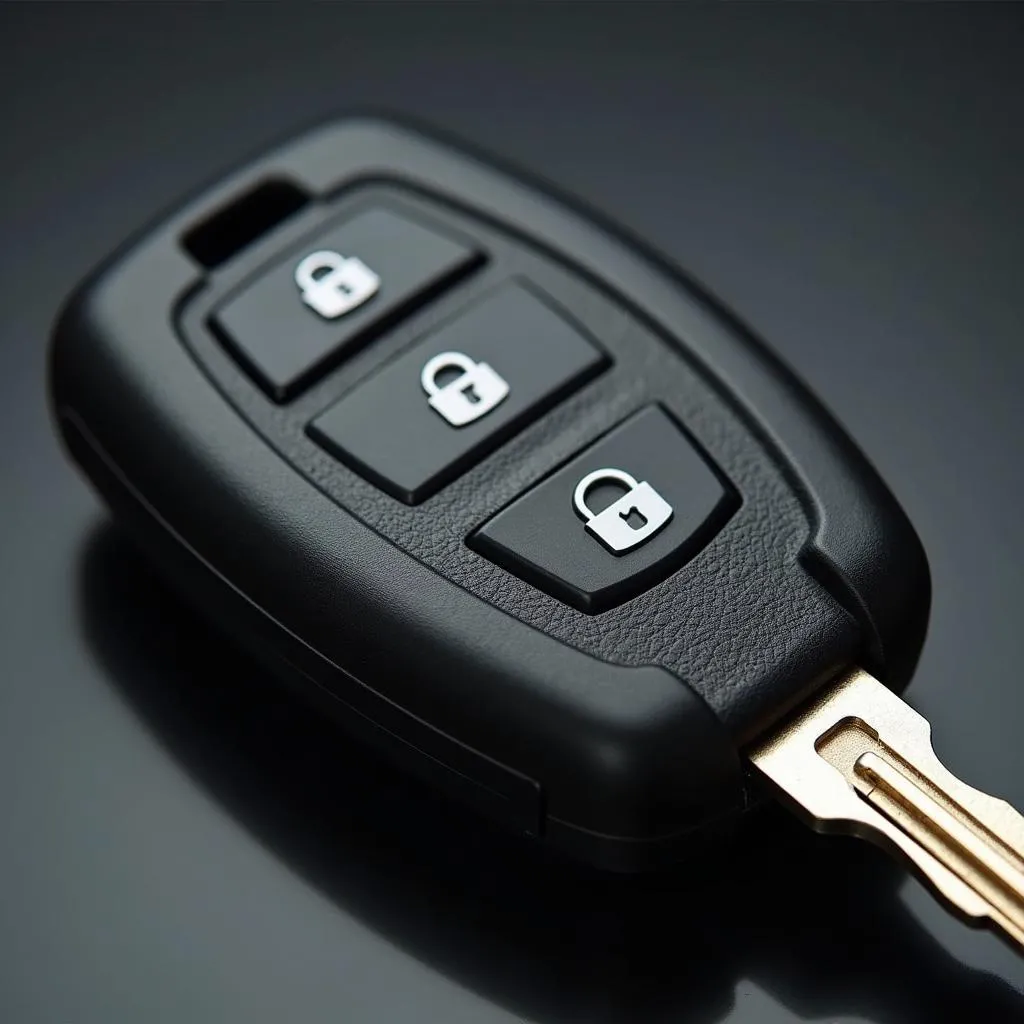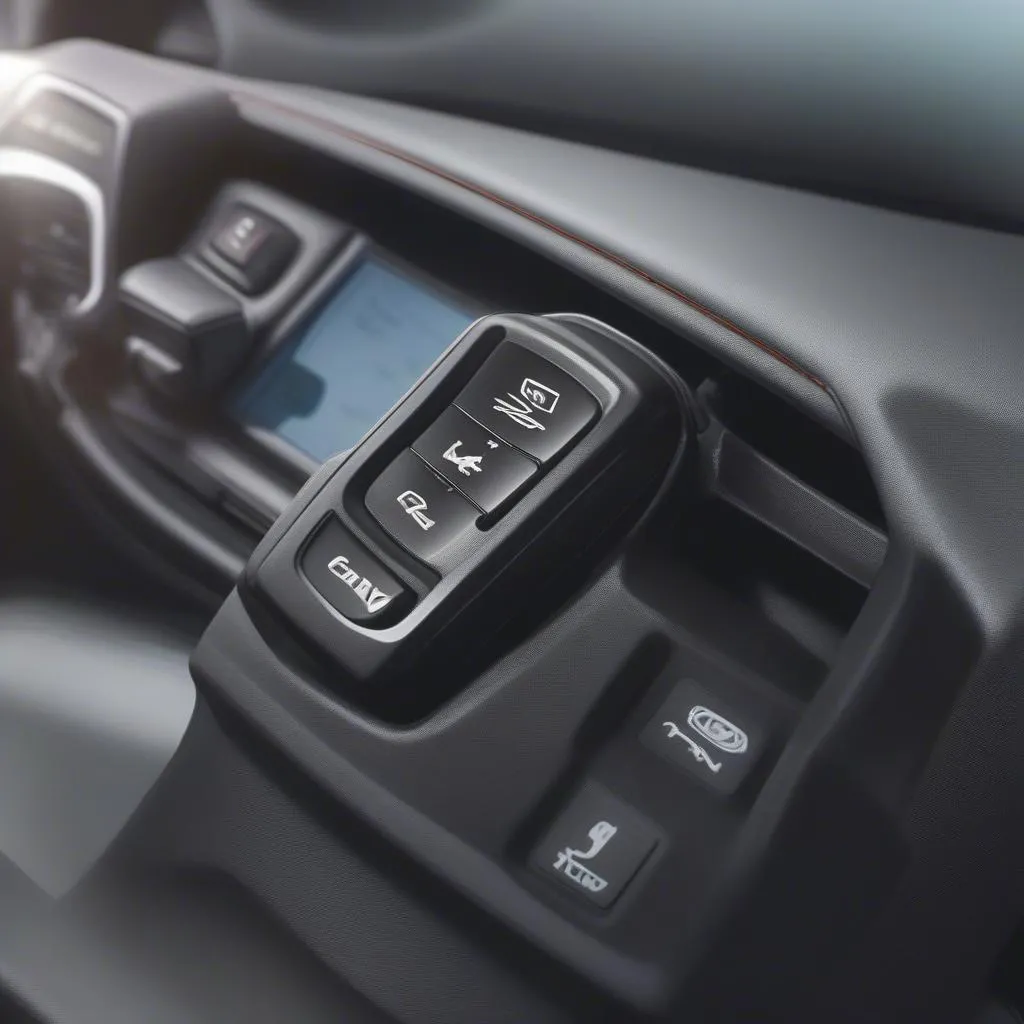Wondering if your car is equipped with a passive anti-theft system? You’re not alone! This is a common question car owners have, especially when experiencing issues like difficulty starting or intermittent electrical glitches. This article will guide you on how to determine if your car has a passive anti-theft system and what that means for you.
Understanding Passive Anti-theft Systems
Before we dive into how to tell if your car has one, let’s clarify what a passive anti-theft system actually is. Unlike active anti-theft systems, which require manual activation like setting an alarm, passive systems work automatically. They use technology like transponder keys and immobilizers to prevent theft without any action from the driver.
How Passive Anti-theft Works
Here’s a simple breakdown:
- Transponder Key: Your key contains a tiny chip that emits a unique code.
- Immobilizer System: The car has a receiver that reads the code from your key when it’s in close proximity.
- Authorization: If the codes match, the car’s computer authorizes the ignition and fuel systems to engage, allowing it to start.
Benefits of Passive Anti-theft
- Deterrent to Theft: The system makes it extremely difficult for thieves to hotwire or steal your car without the correct key.
- Peace of Mind: You get automatic protection without having to remember to activate anything.
Signs Your Car Has Passive Anti-theft
While most modern cars have some form of passive anti-theft, here are some clues to look for:
- Key Fob: If your car key has a “lock” or “unlock” button, it likely contains a transponder chip.
- Dashboard Indicator: Check your dashboard for a security light. It might be a flashing car icon or a key symbol. This light typically blinks when the car is locked and turns off once the correct key is recognized.
- Owner’s Manual: Your owner’s manual will definitively state if your car has a passive anti-theft system and provide details on how it operates.
 Car dashboard with security light illuminated
Car dashboard with security light illuminated
Common Issues Related to Passive Anti-theft
While these systems enhance security, they can occasionally cause issues, such as:
- Key Fob Battery: A dead battery in your key fob can prevent the immobilizer from disengaging, making your car think it’s being stolen.
- Faulty Transponder Key or Immobilizer: Over time, components can malfunction, leading to communication errors between the key and the car.
Expert Insight: “We often see vehicles towed into our shop because the owner thinks their battery is dead, but it’s actually a passive anti-theft issue,” says Michael Thompson, a seasoned automotive electrician at [Fictional Auto Repair Shop]. “A quick diagnostic scan can usually pinpoint the problem.”
Troubleshooting Passive Anti-theft Problems
If you’re experiencing issues that you suspect might be related to your car’s anti-theft system, here are a few things to try:
- Replace the Key Fob Battery: This is the easiest and most affordable fix to try first.
- Try a Spare Key: If you have a spare key, see if it starts the car. This can help isolate if the problem is with the key or the car’s system.
- Consult a Professional: For complex issues, it’s best to seek help from a qualified automotive locksmith or mechanic. They have the diagnostic tools and expertise to identify and address the problem accurately.
 Car key with transponder chip
Car key with transponder chip
Frequently Asked Questions
Does My 2015 Taurus Have an Anti-theft Device?
Yes, the 2015 Ford Taurus comes standard with a passive anti-theft system called the SecuriLock® Passive Anti-Theft System. You can find more information about this system in your owner’s manual or on the Ford website. If you’re experiencing problems with your Taurus’s anti-theft system, refer to the troubleshooting tips above or check out this helpful resource on how to bypass anti-theft on a 2000 Ford F150.
What is a Passive Anti-theft Device?
A passive anti-theft device is an electronic security system that works automatically to deter theft. It typically uses a transponder chip embedded in your car key to communicate with the vehicle’s immobilizer system.
How do you fix anti-theft?
Fixing anti-theft issues depends on the specific problem. Simple fixes include replacing the key fob battery or trying a spare key. More complex issues might require professional help. For more information on how to fix anti-theft systems, see our guide: How Do You Fix Anti-theft?.
Cardiagtech Can Help!
Experiencing car troubles that you think might be related to your passive anti-theft system? CARDIAGTECH offers a range of high-quality diagnostic tools and resources to help you get to the bottom of the problem. Learn more about our products or contact our team for expert support.
Conclusion
Passive anti-theft systems are an essential part of modern vehicle security. By understanding how they work and being aware of common issues, you can keep your car safe and avoid potential headaches. Remember, if you’re facing persistent problems, always consult with a qualified professional for accurate diagnosis and repair.

